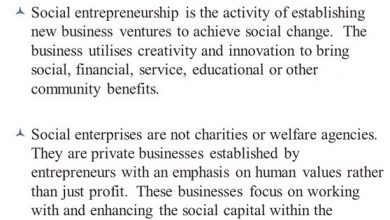Recruitment funnel metrics its Steps and Promote the application process
Recruitment Funnel
In this article we will provide you the information about the Recruitment funnel metrics its Steps and Promote the application process.
The recruiting (or hiring) funnel is the representation of a series of stages at which a candidate’s application progresses towards hiring. It is called a “funnel” because of its format and by analogy with the traditional purchase funnel: many candidates enter the top funnel, but few go through all the steps and are hired.
It is worth noting that the exit of a candidate from the recruitment funnel, or from the selection process, at any stage, can be requested by the candidate himself or by the company. Advancement at each stage takes place by mutual agreement.
The funnel can differ from company to company and even from candidate to candidate. For example, in a small startup, a founder or even CTO can get in touch with someone they’ve worked closely with and convince them to join the company. The entire process might consist of a few meetings and lunch with the team. In a large and mature company, however, the process will probably be more formal and will involve some steps that we will develop further down in the post!
Steps to an Effective Recruitment Funnel
Before we start to discuss the strategy that leads to obtaining the most efficient recruiting funnel, we will describe here what are these steps that make up the selection process and then show which indicators show the success of your funnel:
1-Promote the application process
The definition of characteristics, technical skills and personality traits – the so-called job description – that make up the perfect hiring must take place before the beginning of the recruitment process itself. This is the first step of the funnel.
After carrying out this first step, the recruiter must establish which will be the channels for publicizing the vacancy, such as social networks, intranet advertisements, specialized sites, etc.
2-Selection
This is the first part of the candidate bottleneck. The recruiter selects the pool of candidates that may be suitable for your company.
3-Screening
Potential candidates have been identified, so it’s time to screen them to ensure they’re right for the role. This is when interviews will be conducted, in person or by video, and unsuitable candidates may be excluded from the contest.
4-Interview
A deeper assessment of the candidate’s skills, experience, characteristics and values. This must be conducted with the recruiter, manager of the vacancy and other employees involved in the process
5-Offer
The company has gathered all the information they need to decide whether to extend a job offer and what that offer will look like for the ideal candidate.
6-Negotiation and closing
After receiving the offer, there may be negotiations between the candidate and the company before the candidate decides whether to join the company.
Recruitment Funnel Metrics
To create an efficient hiring process and hire the best talent available, it’s important that your talent pool is running smoothly. So how can you measure recruitment funnel performance?
The main tip is to pay attention to the metrics that are highlighted below:
1-vacancy closing time
The vacancy’s SLA – as the vacancy closing time is called in the area’s jargon – is one of the most used indicators in the R&S area. Keeping track of the time it takes to fill an open position is a valuable recruiting metric that provides stability in an organization. Shows how long it would take to locate, recruit, and hire a new employee.
The most prosperous companies take the necessary steps to reduce their time per hire while preserving the excellent quality of recruitment. According to a benchmark survey conducted by a North American recruitment company, the average hiring time is 43 days. If your hiring exceeds that time too long, you need to see where there is a gap in the process.
The VAGAS for business platform can help you reduce the time to fill vacancies for at least 2 good reasons:
1. Access to candidate database – In Brazil, the only company that provides a complete ATS and a job board is VAGAS.COM. The company has more than 20 million registered professionals and is the most visited job site in the country.
2. Offers the advertising channels functionality – a technology that connects your vacancy to other communication channels without you having to open a new advertising process.
2-Number of resumes received and conversion
This indicator is important for the recruitment cycle, as it indicates the number of candidates for a given vacancy. The greater the number of applications, the greater the chances of finding a qualified professional.
In the second stage of the funnel, professionals change from interested to candidates. Mainly through the résumé, a careful selection is made of those most suited to the vacancy and hence the number of résumé conversions, which is the number of candidates registered minus the number of professionals who were selected for the second phase of the process.
According to the benchmark study mentioned earlier in this post, if your conversion rate is over 11%, you’re on the right track!
Remember, creating a compelling candidate experience is a key factor in getting the attention of professionals in the workforce. To do so, rely on VAGAS for business features.
With our technology, it is also possible to observe indicators that can make a difference in the efficiency of the process and in the candidate’s experience, such as:
- deadline for applications;
- communication between company and candidate;
- engagement of candidates for the vacancy;
- time to comply with internal processes;
- communication between recruiters and area managers.
3-Quality of contracting
Estimating hiring quality is one of the most useful recruiting metrics for hiring managers. The quality of employment has a long-term influence on the company. It also affects overall quality, productivity, engagement and employee satisfaction.
The results obtained lead to more stable retention rates; more high-quality hires means finding the best match for a company.
The best way to guarantee good indexes for this metric is to guarantee the candidate’s experience that has the company’s cultural fit. For that, the best thing is to create a personalized career page to expose your employer brand.
4-Cost per contract
Cost-per-hire metrics tell companies how much it costs to hire new employees, including advertising costs, recruiting fees, social media accounts, LinkedIn, etc.
Like time to hire, cost per hire provides a metric for recruiting and provides a complete view of the effectiveness of the recruiting process.
To help keep this metric up to date, hiring teams should store all the information they collect in one place and make it easily accessible to everyone involved in the hiring process.




